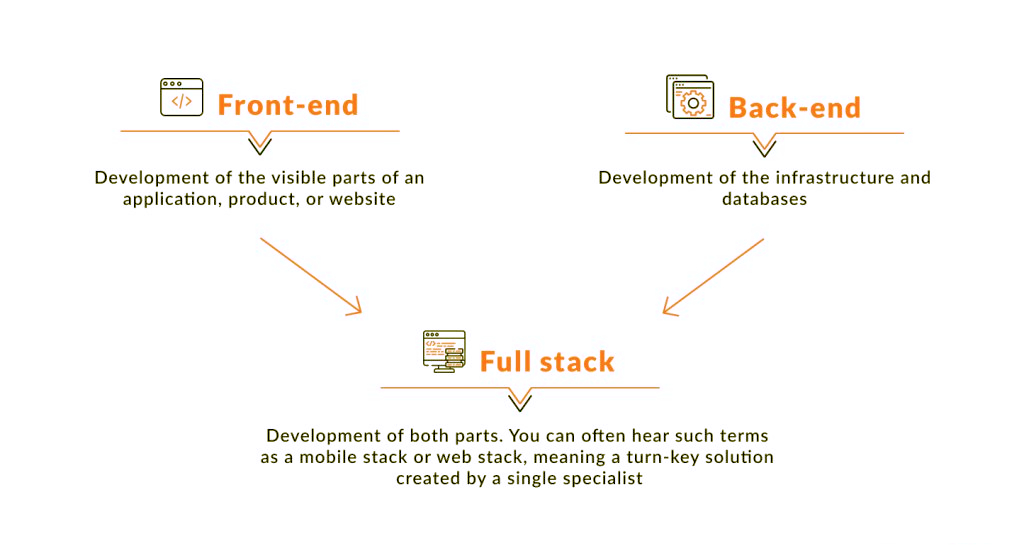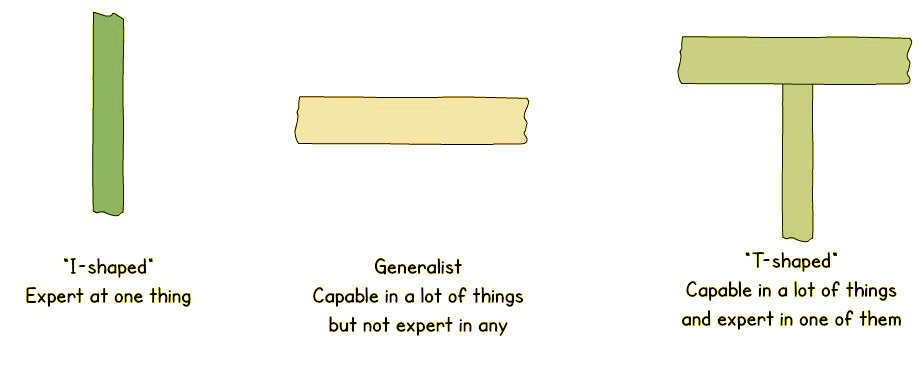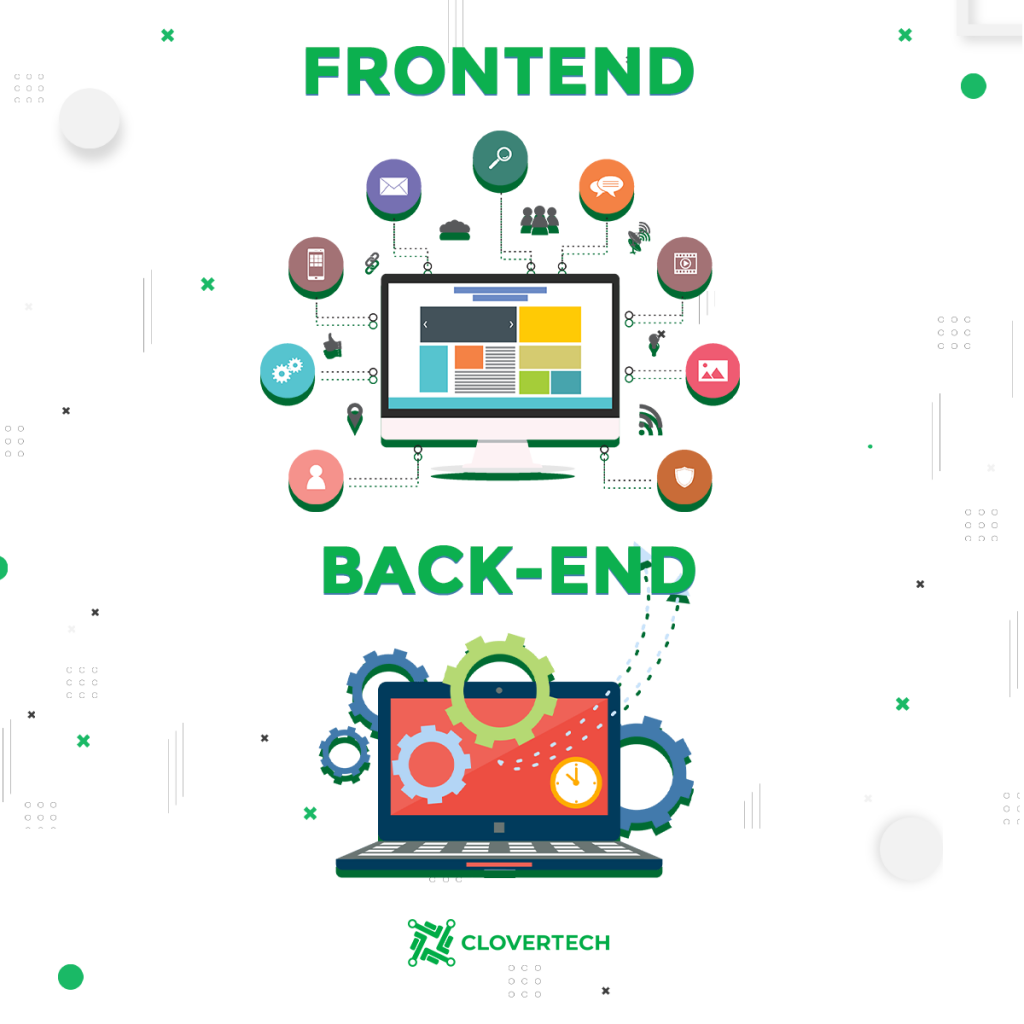In this article, we will tell you about full-stack development in general, what are the differences between it and other IT expert fields, and what skills are needed to succeed in this type of development.
Generally, there are three main directions in development:
- Front-end, the development of all the user interface parts of an application;
- Back-end, the development of an application’s databases and structure;
- Full-stack, which is the development of both above-mentioned parts.
From this short paragraph, it is simple to understand why full-stack developers are in high demand – the companies want to reduce costs and make product development more efficient. Full-stack development corresponds greatly to these goals since it takes just one specialist instead of two for back- and front-end development.
Who is a Full-stack developer?

A full-stack developer is a specialist who is skilled in both backs- and front-end development. It usually takes years of practicing in both types of development to become a full-stack specialist. This person should be skilled in all the coding languages, frameworks, servers, and other environments needed for those development types.
What is T-shaped full-stack development?
Full-stack engineers are quite often called t-shaped specialists. T-shaped developers are not only aware of both front- and back-end development, but also of other technologies, remaining the experts in just one field.

What is the difference between full-stack and back-end development?
To make the difference between those directions clear, let’s see what are a back-end developer’s responsibilities:
- Data creation and recollection;
- Coding in Python, PHP, or others;
- Business logic creation;
- Database management (SQL).
Thus, databases (both relational and non-relational) are one of the largest fields of a back-end developer’s work, alongside server management, infrastructure support, and so on. A full-stack developer is the one who knows all of these, and, in addition, works with the visual sphere of a website or application.
What is the difference between full-stack and front-end development?
Same as we did previously with back-end and full-stack comparison, let’s see what are front-end developer’s responsibilities:
- General site or application appearance, which may include color scheme, buttons, images, etc, in order to make a product convenient for its users;
- Developing in JavaScript, CSS, and HTML;
- Working for both desktop and mobile versions;
- UI/UX design (optionally).
In addition to all the above mentioned, a full stack developer is a master of data structuring and database managing. Therefore, full-stack developers are the ones who understand all levels of a website or an application, and how they work.
What is the difference between full-stack development and full-stack engineering?
Commonly ‘developer’ and ‘engineer’ have the same meaning of a specialist with a set of skills and knowledge. The only minor difference is that engineers may have some experience in project management and system administration, e.g. systems maintenance, networks configuring, etc.
How to master the Full-stack developing profession?
Since this direction of development is large, first, one should be persistent and motivated. The basic proficiencies for a Full-stack developer are:
- Front-end development basics: JS, CSS, HTML;
- Back-end development basics: Python, PHP, or Ruby;
- Knowledge of at least two third-party libraries, e.g. Angular, React
- UI/UX design;
- Databases management knowledge;
Fortunately, there are lots of resources to learn from.
Is it worth it to become a Full stack developer?
After all the above-mentioned aspects of full-stack development, let’s highlight the main reasons for choosing full-stack development:
- A full-stack developer can work on numerous positions, which means that one can always find an interesting project to work on;
- Full-stack developers are highly valued in their teams;
- Thanks to the comprehending of all the product working levels, full-stack developers participate in decision-making on the highest level.
- Higher salary level.
Becoming a full-stack developer grants numerous opportunities, and it takes a lot to achieve it. But it is definitely worth it!




